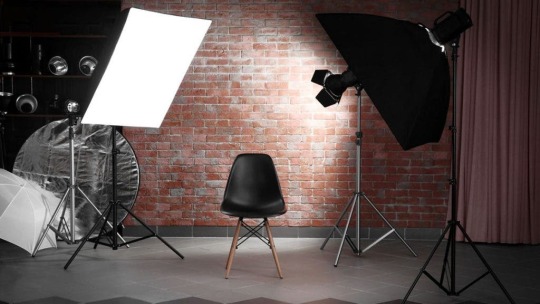Text
Tips for Great Studio Lighting
In previous articles, studio lighting photography has been discussed in detail, including the key concepts of studio lighting in relation to common light, the inverse square light law and subject distance. In this article, the emphasis is on landscape photography with location images. I will discuss some studio lighting tips for this genre. If you are new to landscape photography or have been studying studio work for any length of time, these tips and techniques should help to ease your way into a fulfilling and rewarding studio lighting experience.

Understanding the different light sources
The most important thing to remember in studio lighting photography is that you are dealing with different kinds of light sources and different intensities. One could be the ultra-violet light or downlight. It is also important to understand the different composition issues related to natural light sources, including shadows, highlights and ambient occlusion. All of these aspects must be resolved for an acceptable result.
Continuous lighting
Another important studio lighting photography tip relates to the use of continuous lighting equipment. With current technologies, studio photographers can capture images with high contrast by pre-lightning a scene with one or more lights. This is done by switching on a series of lights at different distances, which then vary in intensity and color. In addition to such continuous lighting equipment, photographers also have the option of using photoelectric lights to illuminate a subject. Some photographers still prefer to shoot in film mode with an exposed and developing film inside the camera. Click here to know more about studio lighting photography - https://homestudioexpert.com.

Using reflectors
There are many things that photographers consider when setting up their studio environment—these range from general ambient lighting, two spotlights, downlights and reflective surfaces. At times, reflectors may be used instead of simple lights in order to add a sense of dimension to a photograph. Reflectors come in many forms, including globe reflectors, and are commonly used in landscape and seascape photography. The use of reflectors can be seen in both still and moving pictures.
Shooting during overcast days
Many photographers feel that shooting on overcast days is difficult because the lighting requires more fine-tuning. Shooting during overcast days requires one to cover up the camera and put on some sort of a filter to prevent the sunlight from damaging the image. Shooting on overcast days can require one to place the camera in the shade and shoot from there. This is an excellent way to prevent camera fog and avoid the sun shining on the camera.

Wrapping up
Positioning the camera at the right height will give better lighting and subject isolation. In the studio lighting equipment for landscape photography, different light bulbs are used for different subjects, and in post-production, the background of the photograph can be altered using layers.
1 note
·
View note